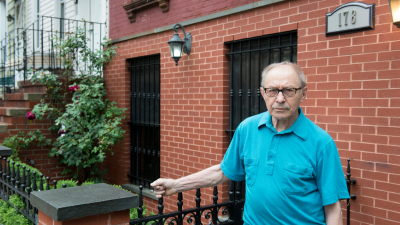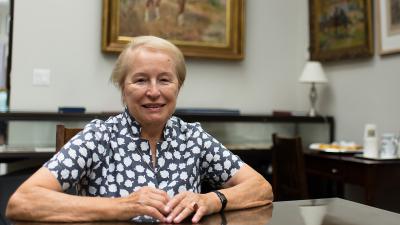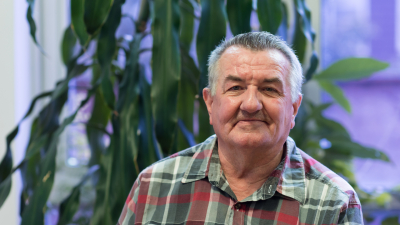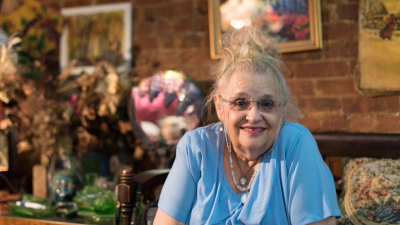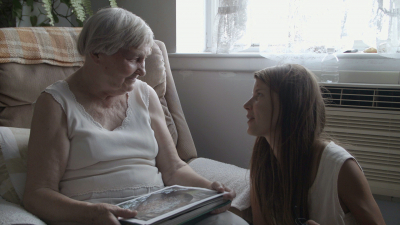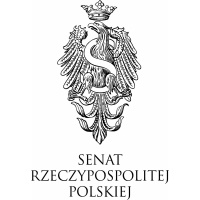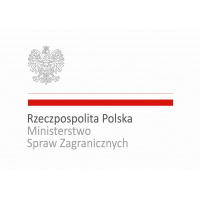Greenpoint. The transition

Greenpoint is a special place that comes to mind when one thinks of Poles living in emigration. In 20th century this part of New York attracted Polish immigrants coming to the US. The district was so infused with Polishness that New Yorkers used to call it Little Poland. Back in 2010, Poles constituted almost 50% of all Greenpoint residents. The traces of Polish history and presence in the district are omnipresent yet the number of Poles in Greenpoint has been decreasing year by year.
In recent years the district has underwent major changes. The Polish character of Greenpoint is not as distinctive as it used to be 10 or 20 years ago. The political transformations in Poland, changes to the visa lottery rules or progressive gentrification are the main reasons why Poles are moving out of the district. The “Greenpoint. The Transition” project prepared by the Culture Shock Foundation that begun in 2014 aims at documenting the changes occurring in Greenpoint and presenting it as a venue with significant cultural potential, disseminating the stories of its Polish residents.
In 2015, the team of the Oral History Archives of the Emigration Museum in Gdynia joined the project. The scholars from both institutions have been exchanging their knowledge and experiences regarding oral history and working on creating new audio and video interviews with the residents of Greenpoint. The excerpts presented on the website constitute an attempt at showing that Polish immigrants have been a significant part of Greenpoint for many decades and telling their stories in their own voice. The collection features the stories of Poles who left their country due to various reasons in different time periods with Greenpoint being a central place to all of them.
At the time of the New York Exchange in Manhattan, the zoo and theYankee Stadium in Bronx, Greenpoint was full of blacksmith shops andrefineries. There was a shipyard and factories of numerous everydayitems that satisfied the demand of the entire US. The district was anindustrial supply base of thriving New York City. Year by year, thedemand for workers in the factories and industrial plants was increasingand it was met by the emigrants from Germany, Ireland and mostly from Poland. Thus, the end of the 19th century was a time when the seed of the Polish diaspora began to evolve in Greenpoint.
Alongwith Poles in Greenpoint Polish shops, entertainment venues and, whatis most important, the Church of Stanislaus Kostka operating untiltoday, were being established. The Poles had a venue where they couldregularly meet during Polish masses. The Stanislaus Kostka parish hasbecome an important element integrating the local Polish community. The second important institution was the Polish National Home located at 261 Driggs Avenue; since 1914 it has been the seat of various Polish organizations, a place to organize meetings and exchange ideas. Infollowing years it housed Polish artists who came to Greenpoint to give concerts and visit their countrymen.
Before the Second World Warthe Polish community in Greenpoint was strong enough for the Poles to organize general strikes in factories to protest against low wages and unequal treatment. The presence of Poles was noticeable enough for the
local residents so it began to raise certain dislike among some of them. A group called “Native Borns” was established, gathering Americans born and raised in Greenpoint who opposed the inflow of Poles and Russians to Greenpoint claiming that the Poles deprived them of their jobs.
Despite such opposition Poles were becoming a constant element of the social landscape. They came to Greenpoint in phases. The first phase, after the end of the Second World War, comprised displaced persons who emigrated to the US. In the next decades they were followed by their natives and later on Polish political refugees decided to leave Poland and come to
the US. At the same time, due to progressive industrialization of thedistrict and the fact that it was inhabited by workers, Americans started moving out of Greenpoint, settling in more peaceful suburbs of New York. Due to their outflow from the district, together with constant inflow of Poles in the 1960s, Polish emigrants and their descendants constituted as many as 80% of the Greenpoint population.
Polish emigration to Greenpoint was also peculiar because entire families and villages from Poland moved to the district. Fathers came to the US then convinced their son to do the same and later the sons encouraged their friends to emigrate. They all lived in Greenpoint, rebuilding Polish community and fostering Polish traditions. After many years, as a result of the overlying emigration phases, the Polish community has built a
coherent environment with a network of contacts, emigration practices and traditions, and even local vocabulary.
Being such a major and thriving part of the community, Poles shaped Greenpoint and left their stamp on it. There were Polish shops and restaurants. Polish language was spoken freely in the streets and in shops packed with goods imported from Poland. Polis emigrants set up their businesses and bought flats to rent to their countrymen.
In the course of establishing the Polish community, various institutions, whose task was to help Poles in emigration, were being set up in Greenpoint. In 1972, the Polish and Slavic Centre, a venue for meetings and cooperation among Poles, was opened. Four years later, the founders of the Centre created
the Polish and Slavic Federal Credit Union who helped Polish emigrants to purchase real estate. The district also had its Polish newspaper called “Nowy Dziennik – Polish Daily News”.
This heyday of the Polonia in Greenpoint lasted until the 1980s. It was a period of slowdown in industrial sector with the factories and plants being relocated to the south of the US. Poles followed the factories and started to look for jobs in different parts of the city or country. After 1989 some of them decided to go back to their homeland. In the 1990s the Polish community was ousted by growing rents and the district
welcomed artists and young Americans. As a consequence of the changes today’s Greenpoint is not as Polish as it used to be. However, Poles are still its inherent element.
Emigrant’s Archive cooperated with a group of researchers from Culture Shock Foundation from New York who regularly interviewed Polish emigrants living in the Greenpoint district. Through those interviews we found out how difference between stereotypical image of an „American Dream” and reality turned out to be a huge challenge for Polish emigrants. Many of them experienced trauma after their arrival and sometimes it took many years of effort to build a new life in New York. We were also interested in the aspect of separation from relatives who stayed in Poland or were unable to accept difficult living conditions and returned to their homeland. The research team of the Emigrant’s Archive decided to take a closer look into the lives of Poles of Greenpoint. We wanted to tell a story about building our new world in another country and also about constant attachment to our homeland.
In 2016 the film crew along with Culture Shock Foundation started to look for characters, representatives of different generations whose biographies would show different reasons for emigration, and then strategies for coping with the challenges. The main topic of the film is a social project led by the main character – Martynka Wawrzyniak, whose aim was to get closer to Polish people and engage them in the construction of a monument – a ceramic sphere that was to be burnt out of the soil from the place of birth of emigrants. Emigrant’s Archive managed to create a short documentary movie, Past States, that tries to capture the glimpse of Polish history on Greenpoint.
The collection gallery features archival photos of the district at the courtesy of Wojciech Kubiak, a photographer who has been living and working in Greenpoint for more than thirty years.
The “Greenpoint. The Transition 2015” Project created by the Culture Shock Foundation was co-financed from the funds
received from the Ministry of Internal Affairs.
The “Greenpoint. The Transition 2016” Project created by the Culture Shock Foundation is co-financed in the competition for the public task “Cooperation with Polish Diaspora and Poles Abroad” by the Senate of the Republic of Poland.
More information about the activities of the Culture Shock Foundation at: http://www.cultureshock.pl/pl/
read more...
Pahiatua
At a
time when Poles were movingto the south of the USSR and the Middle East
for long weeks, in June 1943, the USS Hermitage vessel arrived in New
Zealand in June 1943 for a while, which brought an invitation of the
government for seven hundred Polish children from Iran to Mexico. They
were then visited by the countess Maria Wodzicka, wife of the then
consul of the Republic of Poland in New Zealand, K.A. Wodzicki. Seeing
the tragedy of the toddlers, she decided to create a place where they
could live until the end of the war. This idea was also suggested by her
to the wife of the then Prime Minister of New Zealand, Janet Fraser,
who supported Maria Wodzicka in these activities. The choice of location
was simple. Polish children were to live in Pahiatua, where from 1942
there was a camp for citizens hostile to the allies of the countries. At
the end of 1943, the internees were moved to Matiu-Somes Island, and
the camp began to rebuild the barracks and houses of volunteers from
Pahiatua. The New Zealand government invited Polish children and their
guardians to New Zealand.
In the summer of 1944, a series of
lectures was organized for Polish children about the country to which
they were soon to leave. Each of them was to take to New Zealand Polish
books that they had in their possession. These collections were to
create the nucleus of the Polish library in the Pahiatua camp. The
children got small cardboard suitcases, to which they could pack the
most necessary things.
Travel
The trip to New Zealand began on September 27, 1944, when 733 children
and their 105 guardians left Isfahan by buses and lorries. The first
stop was at the military base in Sultanabad (today: Arak), where
American soldiers entertained the frightened and tired kids. After a
short stop, the children went to Ahwaz, where they spent two days. On
October 4, 1944, Polish convoys left for Chrramszachry at the mouth of
the Tigris and the Euphrates, where the children and their guardians
boarded the ship Sontay. After a six-day cruise, on October 10, 1944,
they reached Bombay. There, they moved to the USS Randall transport. On
October 15, the ship sailed from India to New Zealand. On the deck of a
military ship, Polish children and the ship’s crew played football. A
few of the balls fell over board.
In the evening of October 31,
1944, the USS Randall sailed to the shores of New Zealand. In the
morning of the next day, the ship reached the port of Wellington, the
capital of New Zealand, where it was welcomed by the orchestra and prime
minister Peter Fraser.
From Wellington, Polish children went
to Pahiatua, 160 km away. New Zealand children were released from the
lessons to welcome Poles. They waved and sang standing by the road,
which was followed by two trains with Polish children. After reaching
Pahiatua, 33 trucks transported all of them to the town located on its
southern borders, which was soon to become the Polish Children’s Camp.
„There was neither horror nor fear here”
Since the children from Pahiatua after the end of the war were to
return to Poland, the language and infrastructure of the camp were
Polish. These were also the names of barracks and alleys. The operation
of the camp was supported by the Polish government in exile (until the
Allies have recognized it … in April 1946), then the New Zealand army.
The caretakers and teachers of the children were Poles, but some of the
teachers were New Zealand teachers who taught Poles English and popular
sports in New Zealand – rugby. Small Poles spent their school holidays
frequently with New Zealand families who gave children a chance to
experience a family atmosphere in a new country.
In
the memory of the Adults of Pahiatua, the camp is described as a happy
period. Despite the drama of the war and its consequences in the world,
children could enjoy a normal, peaceful childhood with its usual
problems – a burst of homework, matches, mischief on the playground,
dances and scout meetings …
Many New Zealanders were outraged
by the help, Poles received from their country. There were voices that
some New Zealanders cannot afford such good conditions in which Polish
children lived – free accommodation, free meals and no obligation to
work. The growing reluctance meant that the New Zealand Prime Minister
had to respond to these accusations on many occasions, stressing that
the Camp benefitted from the funds of the Polish Government in London
and maintained itself thanks to the work of Polish guardians.
Closing
The conference in Yalta (February 4-11, 1945) was not without
significance for the fate of the Pahiatua camp. After the territories
from which most of the children came were incorporated into the USSR and
Poland was under Russian influence, the government of New Zealand
wanted to assimilate Polish children. There was an idea for the
guardians to give their children up for adopting families in New
Zealand. The Polish guardians objected strongly to this, it was
important to them that the children were still brought up in the spirit
of Polishness. Prime Minister Fraser was of the opinion that a difficult
decision about their future life should be left to the children
themselves. An agreement was reached between the Polish camp authorities
and the staff, the New Zealand church and the government, under which
the Polish Children’s Camp became Little Poland.
After
1948, children were sent to boarding schools. The boys were sent to the
Bursa of Polish Boys in Hawera, and the girls – to the Polish Girls’
Dormitory in Wellington. Young people who started their professional
lives lived in workers’ hotels, some of the youngest children went to
foster families. Some of the children from Pahiatua decided to stay in
New Zealand and build a new life here. Some decided to return to Poland
with the hope that they would be able to rebuild what was left there.
The Polish Children’s Camp in Pahiatua was officially closed on April
15, 1949.
For three years after the closure of Little Poland,
there was a camp for stateless displaced people from forced labor
centers in Germany. After its closure in 1952, the area became a farm,
where the only trace of the former Polish Children’s Camp functioning
here was a grotto with a statue of the Virgin Mary.
The
book „Two homelands” tells the story of Children from Pahiatua and the
fate of the camp. It is the result of the work of the Children of
Pahiatua: Stanisław Manterys, Adam Manterys, Halina Manterys, Stefania
Zawada and Józef Zawada.
Upload: HERE (in Polish)
Fragments of interviews are part of a full-length documentary film about the fates of Children of Pahiatua „Deceit destiny” directed by Marek Lechowicz.



